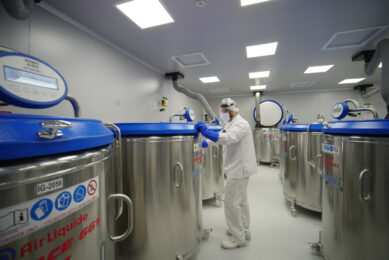How much does it cost to have PRRS on a farm?

A team of international researchers has teamed up to figure out what it costs on a farm level when the pig farm is infected by Porcine Reproductive and Respiratory Syndrome (PRRS).
The research, carried out by researchers from the University of Bern, Switzerland; the Royal Veterinary College of London, UK and Merck/MSD Animal Health, was published this summer in Preventive Veterinary Medicine.
Impact of PRRS on farm level?
In their paper, they wrote that despite PRRS being amongst the diseases with the highest economic consequences in the world, the impact of the disease at farm level is not well understood. According to the researchers, this is related to the fact that in endemically infected pig herds, losses are often not obvious. It is, they wrote, therefore hard to judge what strategy is best to follow how to manage an outbreak.

Read more about pig health in Pig Progress’ own Health Tool
The scientists aimed to develop an epidemiological and economic model to determine the costs of PRRS for an individual pig farm. In a production model that simulates farm outputs, depending on farm type, farrowing rhythm or length of suckling period, an epidemiological model was integrated, they wrote. In this, the impact of PRRS infection on health and productivity was estimated.
How to calculate a PRRS outbreak?
The scientists wrote: “Financial losses were calculated in a gross margin analysis and a partial budget analysis based on the changes in health and production parameters assumed for different PRRS disease severities. Data on the effects of endemic infection on reproductive performance, morbidity and mortality, daily weight gain, feed efficiency and treatment costs were obtained from literature and expert opinion.”
In total, 9 different disease scenarios were calculated, in which a farrow-to-finish farm (1,000 sows) was slightly, moderately or severely affected by PRRS, based on changes in health and production parameters, and either in breeding, in nursery and finishing or in all 3 stages together.
Annual losses due to PRRS
The researches stated that overall losses were slightly higher if breeding was affected than if nursery and finishing were affected. Annual losses ranged from:
• A median of €75,724, if the farm was slightly affected in nursery and finishing;
• A median of €650,090, if the farm was severely affected in all stages.
• In a herd moderately affected in all stages, median losses in breeding were €46,021 and €422,387 in finishing, whereas costs were €25,435 lower in nursery, compared with a PRRSv-negative farm.
The model thus has proven to be a valuable decision-support tool for farmers and veterinarians if a farm is proven to be affected by PRRS (confirmed by laboratory diagnosis), the scientists wrote.
Communication to pig farmers
The authors concluded stating that the output can help to understand the need for interventions in case of significant impact on the profitability of their enterprise. “The model can support veterinarians in their communication to farmers in cases where costly disease control measures are justified.”
- The paper in Preventive Veterinary Medicine was authored by H. Nathues and C. Nathues, University of Bern, Switzerland; P. Alarcon and J. Rushton, Royal Veterinary College of London, UK; R. Jolie, K. Fiebig, M. Jimenez and V. Geurts, Merck/MSD Animal Health.











